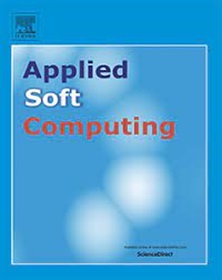基于自编码器和递归神经网络的多线性高光谱解混
IF 6.6
1区 计算机科学
Q1 COMPUTER SCIENCE, ARTIFICIAL INTELLIGENCE
引用次数: 0
摘要
光谱分解技术估算了构成高光谱遥感图像像元的端元光谱和相应的丰度分数,揭示了像元内物质的混合机制。近年来,深度学习在推进光谱分解方面显示出巨大的潜力,特别是在非线性场景中。然而,现有的非线性模型大多依赖于双线性混合框架,对高阶非线性模型的关注有限。这限制了它们捕捉复杂相互作用(如多重光散射事件)的能力。为了解决这个问题,本工作提出了一种利用自动编码器网络框架和多线性混合模型(MLM)的无监督解混方法。它在解码器中采用循环神经网络(RNN)来模拟光在材料之间的多次散射。与依赖显式数学公式的传统多线性方法不同,该方法利用RNN自动学习和近似光的非线性相互作用。此外,RNN权重在训练过程中自适应更新,并被解释为代表材料之间进一步光相互作用的转移概率,从而赋予模型结构明确的物理解释。此外,还设计了一种新的停止准则,以保证在反向传播过程中获得更好的RNN权值。在合成数据集和真实数据集上进行的实验表明,该方法具有较好的性能。本文章由计算机程序翻译,如有差异,请以英文原文为准。
Multilinear hyperspectral unmixing based on autoencoder and recurrent neural network
Spectral unmixing techniques estimate the endmember spectra and corresponding abundance fractions that constitute the pixels of hyperspectral remote sensing images, revealing the mixing mechanisms of materials within pixels. In recent years, deep learning has shown significant potential in advancing spectral unmixing, particularly in nonlinear scenarios. However, most existing nonlinear models rely on bilinear mixing frameworks, with limited focus on high-order nonlinear models. This restricts their ability to capture complex interactions such as multiple light scattering events. To address this issue, this work proposes an unsupervised unmixing method leveraging an autoencoder network framework and the multilinear mixing model (MLM). It employs a recurrent neural network (RNN) in the decoder to simulate the multiple scattering of light between materials. Unlike conventional multilinear approaches that rely on explicit mathematical formulations, the proposed method leverages the RNN to automatically learn and approximate the nonlinear interactions of light. Moreover, the RNN weights are adaptively updated during training and interpreted as transition probabilities representing further light interactions among materials, endowing the model structure with explicit physical interpretation. Besides, a new stopping criterion is also designed, which ensures better RNN weights are obtained during backpropagation. Experiments conducted on both synthetic and real datasets demonstrate the better performance of the proposed method.
求助全文
通过发布文献求助,成功后即可免费获取论文全文。
去求助
来源期刊

Applied Soft Computing
工程技术-计算机:跨学科应用
CiteScore
15.80
自引率
6.90%
发文量
874
审稿时长
10.9 months
期刊介绍:
Applied Soft Computing is an international journal promoting an integrated view of soft computing to solve real life problems.The focus is to publish the highest quality research in application and convergence of the areas of Fuzzy Logic, Neural Networks, Evolutionary Computing, Rough Sets and other similar techniques to address real world complexities.
Applied Soft Computing is a rolling publication: articles are published as soon as the editor-in-chief has accepted them. Therefore, the web site will continuously be updated with new articles and the publication time will be short.
 求助内容:
求助内容: 应助结果提醒方式:
应助结果提醒方式:


